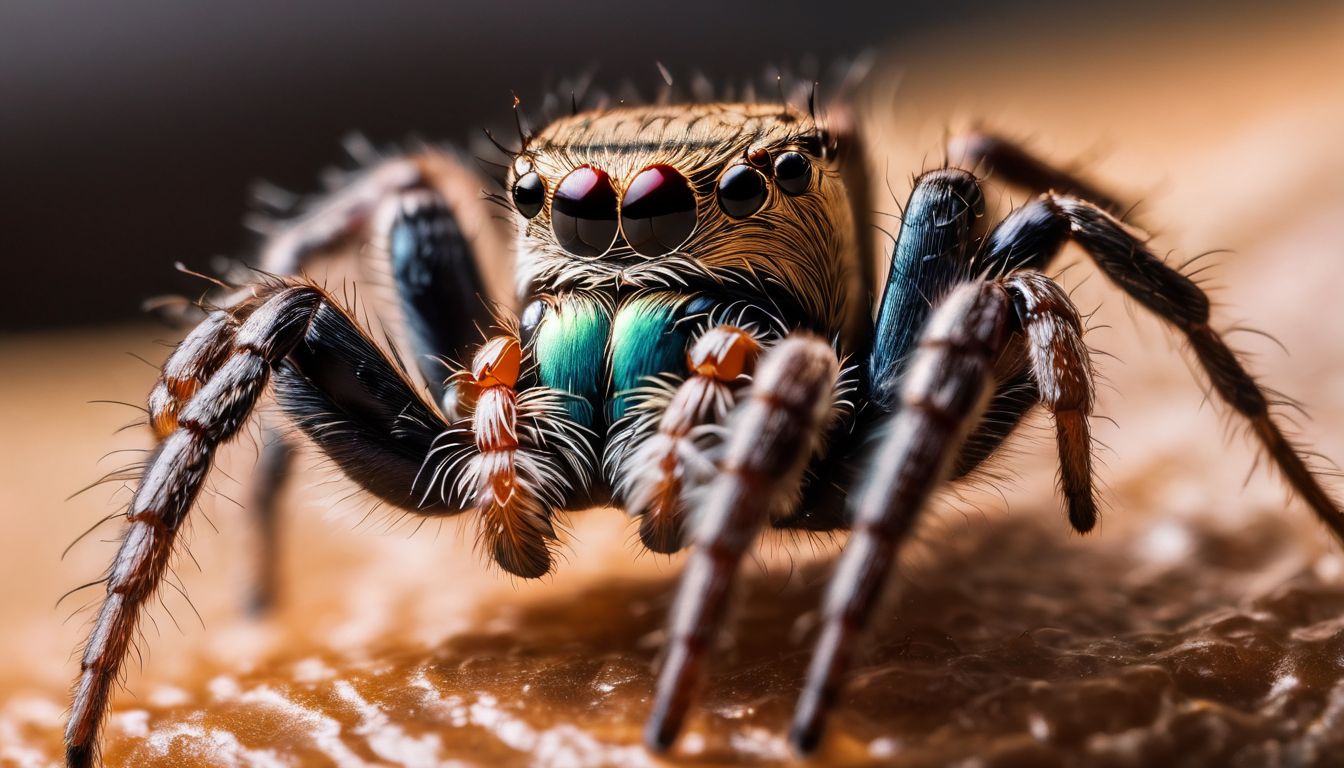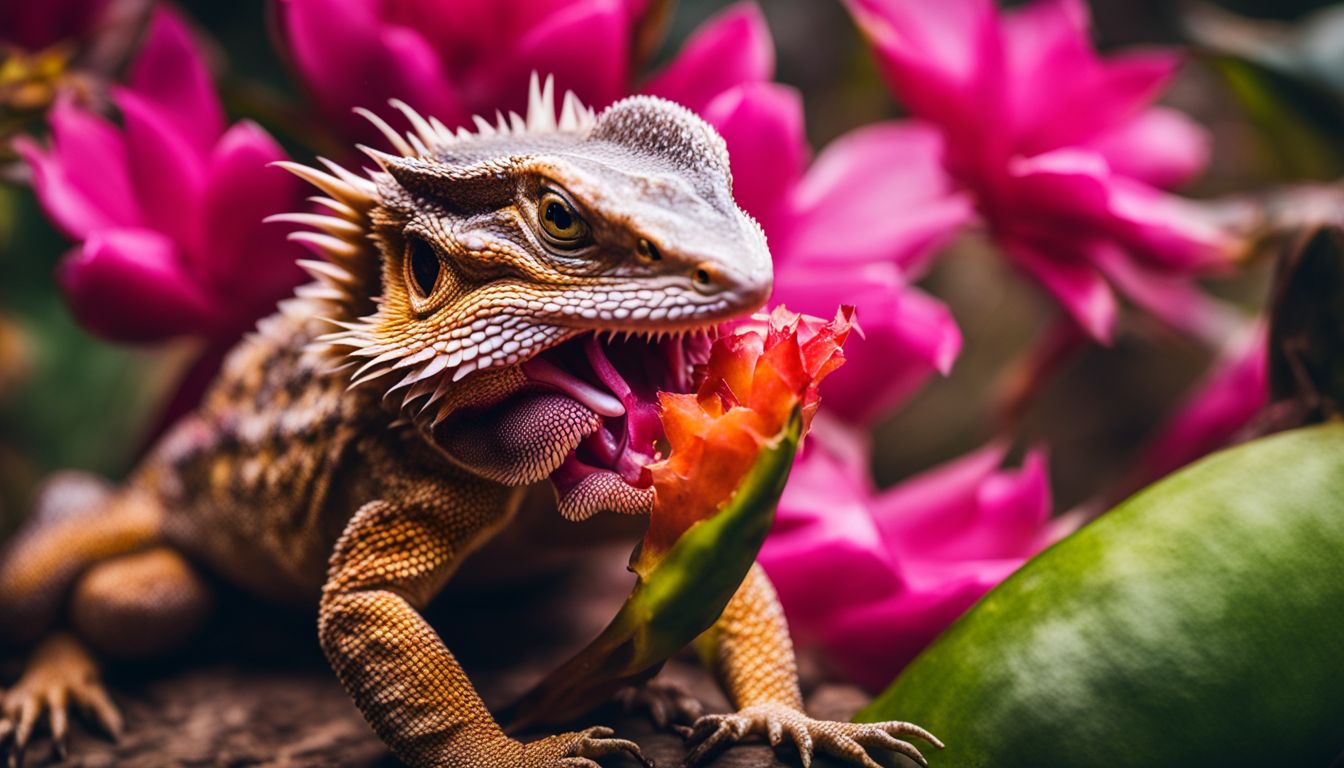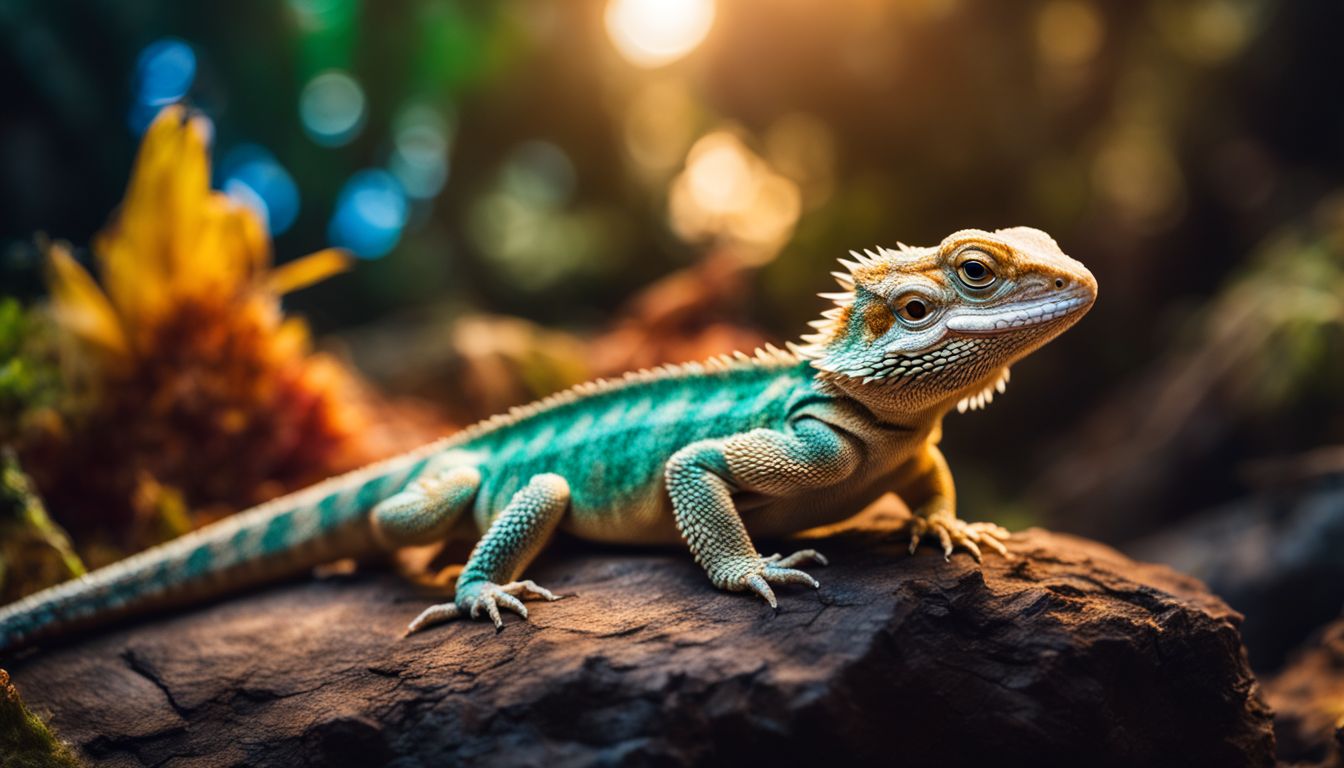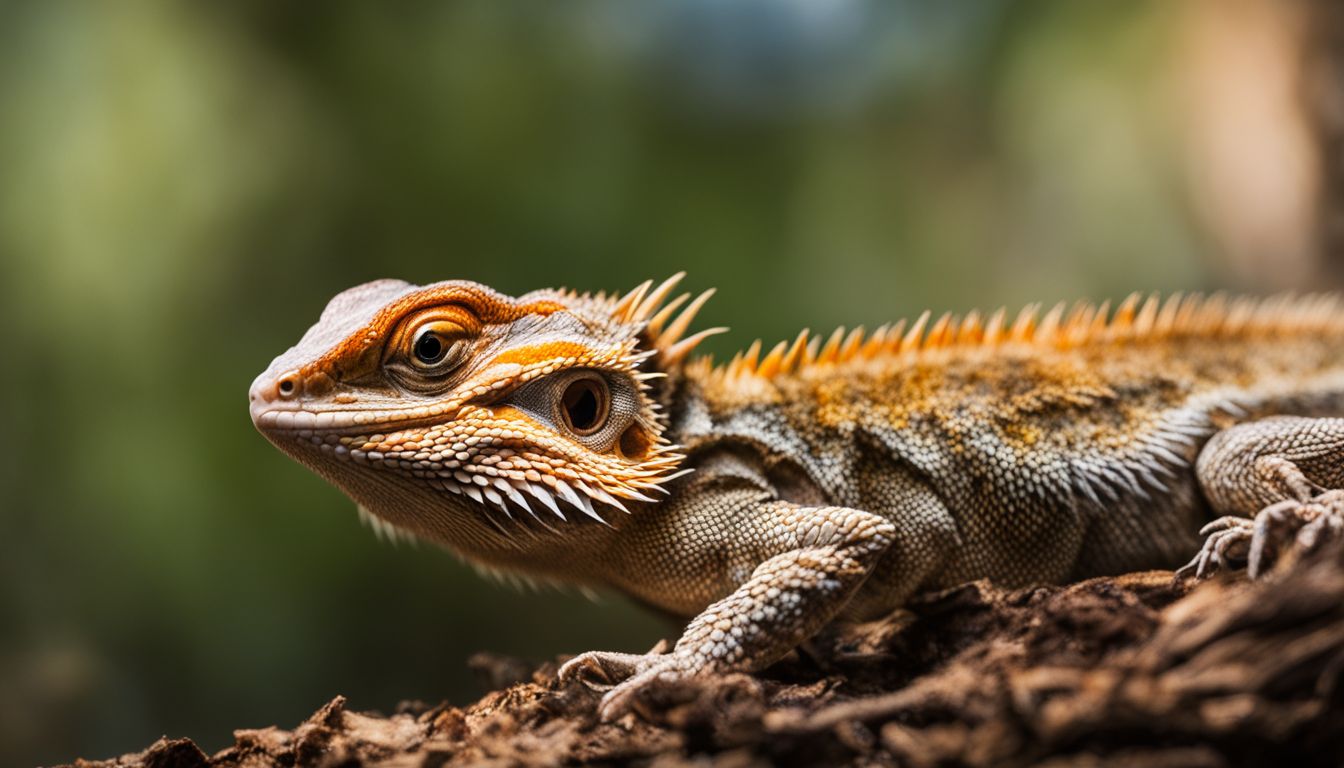Have you ever wondered how a spider can scurry up walls without any bones? Unlike humans and mammals, spiders rely on an exoskeleton made of chitin for support. This blog will unveil the mystery behind spider movement and growth, without the need for bones like ours.
Discover their unique world!
Key Takeaways
- Spiders do not have bones; instead, they rely on an exoskeleton made of chitin and proteins for support and protection.
- Their exoskeleton doesn’t bend, so spiders must molt to grow because the exoskeleton cannot expand like human bones.
- Spiders use hydraulic pressure, muscle flexion, and jointed appendages to move with agility despite the absence of an internal bone structure.
Exploring the Misconception: Do Spiders Have Bones?
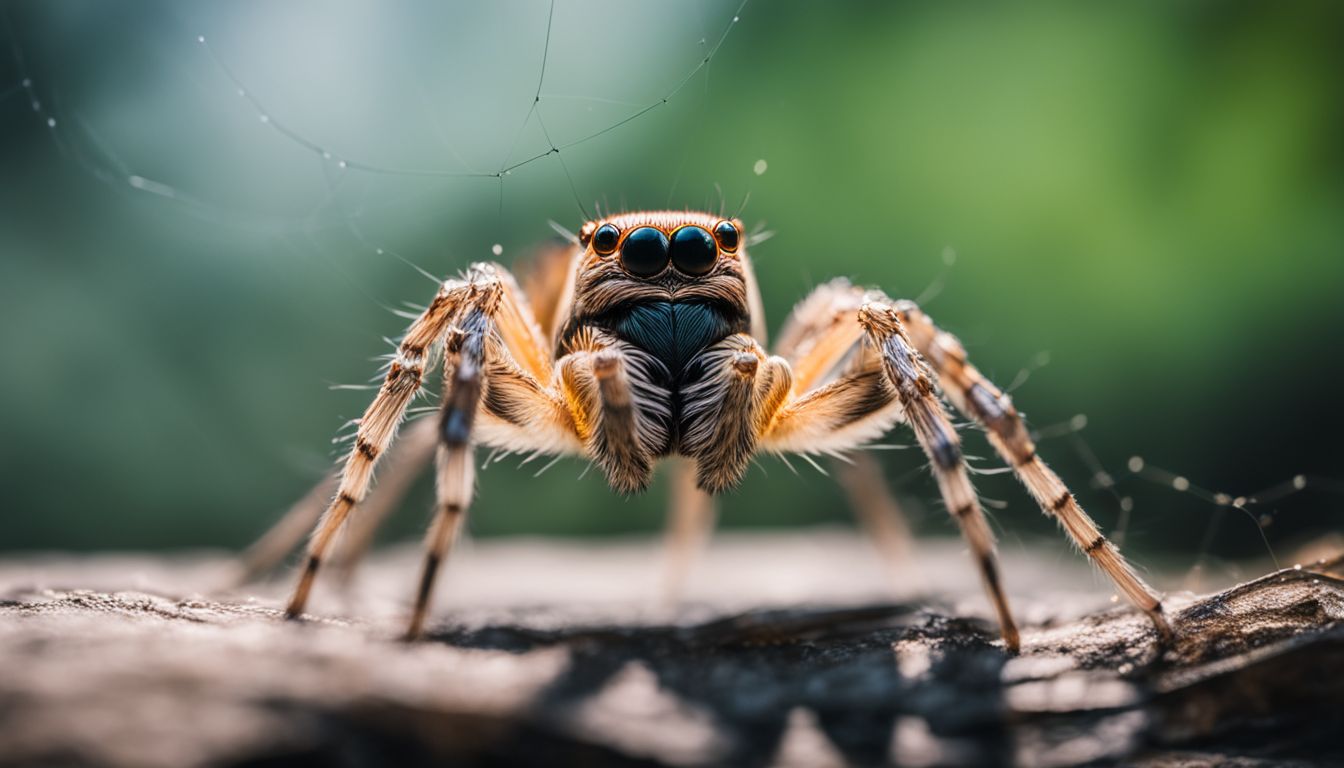
Some people think spiders have bones inside their bodies, but this is not true. Spiders belong to the group of animals called arthropods, which includes insects and crustaceans like crabs too.
Arthropods don’t have bones inside them. Instead, they wear their skeleton on the outside – it’s a hard shell called an exoskeleton.
This exoskeleton protects spiders and gives them something to hold onto with their muscles. Imagine wearing a suit of armor that holds you up; that’s kind of what a spider’s exoskeleton does for them.
Now let’s find out how this cool outer shell works!
The Exoskeleton: Spiders’ Protective Outer Shell

The exoskeleton of a spider is made up of chitin and proteins, providing a rigid, protective outer shell. It serves as the spider’s skeletal structure, offering support and protection for its internal organs.
Composition of chitin and proteins
Spiders’ outer shells are tough. They have layers made of chitin and proteins. Chitin gives their exoskeleton strength. This keeps spiders safe from harm.
Their bodies are covered by a special shell with different layers of chitin-protein mixtures, like the exocuticle and endocuticle. These combinations make spiders strong and help them grow big while staying protected.
Exoskeleton vs. Endoskeleton
Spiders have a tough outer shell called an exoskeleton. It’s made of chitin and proteins, working like armor to protect their bodies. This exoskeleton is on the outside and keeps everything in place.
Endoskeletons are different because they’re inside the body, like human bones. They let us bend and move easily.
The spider’s exoskeleton doesn’t bend, so spiders can’t grow bigger without shedding it first. Now let’s find out how these eight-legged creatures move with such a firm outer cover!
Spider Movement: A Hydraulic Marvel
Spiders use hydraulic pressure to move, with a combination of muscles and jointed appendages allowing them to flex and extend their legs for precise movements. Understanding how spiders navigate their environment is essential to appreciating their unique anatomy.
How spiders use hydrostatic pressure to move
Spiders don’t have bones inside their bodies. Instead, they use hydraulic pressure to move. When a spider wants to extend a leg, it increases the pressure of its hemolymph (a fluid like blood) in that leg.
This increased pressure causes the legs to extend and flex, helping spiders run and jump without any bones.
The hydraulic system in spiders’ legs is like an inflatable tube that can be filled with more or less air as needed for movement. Spiders are able to control this process with precision, allowing them to move quickly and smoothly despite not having an internal bone structure.
The role of muscles and jointed appendages
Spiders use powerful flexor muscles and a hydraulic system to move their legs. These muscles control the flexible joints between the femur and tibia in each leg, allowing spiders to bend and extend their legs for movement.
Unlike most legged beings, spiders do not have extensor muscles in their major leg joints. Instead, they rely on the cephalothorax to regulate hydraulic movement and pressure hemolymph, enabling them to walk, climb, or capture prey.
Each spider has 48 knees spread across eight legs with six joints each. This unique anatomical structure allows spiders to move with agility and precision as they navigate their environment using a combination of hydraulic pressure and muscle flexion.
Spiders’ intricate musculature and jointed appendages contribute to their remarkable ability to adapt and thrive in various habitats through efficient locomotion.
Spider Molting: Growth and the Exoskeleton
During the molting process, spiders shed their old exoskeleton to accommodate growth. This vulnerability leaves them temporarily exposed until their new exoskeleton hardens.
The process of shedding the old exoskeleton
Spiders molt to shed their old exoskeleton as they grow. This is a crucial process for their growth and development.
- Spider’s body releases fluid to break down the chitin in the old exoskeleton, making it easier for them to shed.
- If spiders don’t shed the old exoskeleton in one go, it can harden and cause problems.
- Shedding the exoskeleton leaves the spider vulnerable but is necessary for their growth.
- The first molt often happens when the spider is still inside the egg.
- Spiderlings shed their outer shell as they grow, replacing it with a new one.
- Failure to shed the old exoskeleton properly can hinder a spider’s ability to thrive and survive.
Vulnerabilities during the molting phase
Spiders are vulnerable to attack during the molting phase. The new exoskeleton formed during molting is very soft, increasing the spider’s vulnerability. Without their protective exoskeleton, spiders are very vulnerable to attack by predators as they grow.
Spiders lower themselves on a silk line during molting, indicating their vulnerability.
The process of shedding the old exoskeleton makes spiders susceptible to attacks from predators because their newly formed soft exoskeleton does not offer sufficient protection. Lowering themselves on a silk line shows how delicate and precarious this stage is for spiders, making them an easy target for potential predators looking for an opportunity to strike effectively.
Comparative Anatomy: Spiders and Other Arthropods
Spiders share some similarities with other arachnids like scorpions, such as their jointed appendages and exoskeleton. However, they also have key differences from insects like beetles, particularly in terms of their body structure and respiratory systems.
Similarities with arachnids like scorpions
Spiders and scorpions, both belonging to the arachnid family, share common anatomical features with other arthropods. They have eight legs, as well as two main body segments – the cephalothorax and abdomen.
In addition, both spiders and scorpions possess pedipalps used for sensing and manipulating objects, along with chelicerae that are modified into fangs for capturing prey. These similarities unite them in their classification as arachnids within the animal kingdom.
Furthermore, these creatures also rely on external skeletons made of chitin for protection. This exoskeleton serves as a shield against predators while providing structural support to their bodies.
Key differences from insects like beetles
Insects like beetles have six legs while spiders have eight. Spiders do not have antennae or wings, which many insects do. Additionally, spiders have two body segments – the cephalothorax and the abdomen, unlike insects that typically have three distinct body parts: the head, thorax, and abdomen.
Moreover, spiders use venom to immobilize their prey before consuming them while beetles generally do not possess venom glands.
Beetles breathe through tiny holes called spiracles along their bodies whereas spiders respire through book lungs or tracheae. Furthermore, while both insects and spiders undergo molting to grow, the process is different – for instance, most insects molt throughout their life cycle but after reaching maturity cannot grow further; however for some spider species they continue molting even after reaching maturity allowing them to grow larger.
Additional Fascinating Facts About Spiders
Spiders are diverse in size and shape, ranging from the tiny Patu digua (the smallest spider) to the Goliath birdeater (the largest spider by mass). Some spiders like the golden silk orb-weavers create webs with a distinctive golden color due to a unique pigment.
Moreover, certain species of tarantulas can live for several decades. Additionally, some species of spiders have been known to exhibit maternal care behavior, such as wolf spiders carrying their eggs along with them in a sac attached behind their abdomen.
Conclusion: Appreciating Spider’s Unique Anatomy
In conclusion, understanding spider anatomy helps dispel the misconception that spiders have bones. Instead of an internal skeleton, spiders have a tough outer shell called an exoskeleton, made of chitin.
This marvel of nature supports and protects these fascinating creatures as they go about their lives in diverse and often surprising ways. Appreciating the unique adaptations of spiders enriches our understanding and respect for these incredible arachnids.
Discover more intriguing spider behaviors by exploring our detailed article on how spiders excrete waste.
FAQs
1. Do spiders have bones inside them?
No, spiders do not have bones. They have an outer skeleton called an exoskeleton that protects their body.
2. What is a spider’s exoskeleton made of?
A spider’s exoskeleton is made of a strong material called chitin and has layers like the epicuticle and procuticle for protection and support.
3. How does a spider grow if it has a hard exoskeleton?
Spiders grow by moulting, which means they shed their old exoskeleton to make room for a bigger one as they get larger.
4. Since spiders don’t have bones, how do they move?
Spiders move by using muscles that pull on the exoskeletal parts like sternum, pedicel, and metatarsi which are connected by joints just as our elbows and knees help us move.
5. Can spiders breathe without lungs?
Yes, spiders can still breathe without lungs; they use special breathing organs called book lungs or tube tracheae for gas exchange to take in oxygen.
6. How do spiders use silk if they don’t have hands with fingers?
Spiders spin silk through their silk glands located near the back end of their bodies; this is how webs are made even though they don’t have hand bones or fingers like humans.

